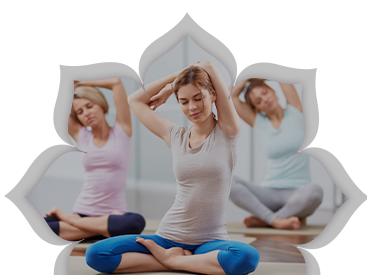Are you interested in yoga, but wondering where it all began? Yoga is an ancient practice that is rapidly gaining in popularity as a gentle, restorative method to bring rejuvenation to the mind, body, and soul. In several installments, we’re going to discuss the history of yoga and how it came to be one of the most popular practices across the entire world today. If you’re interested in beginner’s yoga classes and you’re located in Virginia Beach, look no further than Collective Yoga. We’re passionate about teaching yoga in a relaxing and fun environment. Call us today for more information and to get started!
YOGA FOR EVERY BODY
The History Of Yoga: Part One
PRE-CLASSICAL YOGA
The earliest forms and development of yoga have been traced back to nearly 5,000 years ago, but some researchers believe that it’s more than 10,000 years old. The early beginnings of yoga were developed by the Indus-Sarasvati civilization in the northern part of India more than 5,000 years ago. The word yoga was mentioned in one of the oldest-known sacred texts, the Rig Veda and means to be yoked or join. Those who practice yoga have taken the meaning to unite in the discipline of the practice. The Vedas were texts that contained songs, rituals, chants, and mantras that were to be used by the Brahmins, or the Vedic priests. Over time, the practice of yoga was slowly refined and developed by these priests, or Brahmins and also the Rishis, which were the prophets or seers of their time. The most well-known and renowned of Yogic texts and scriptures is the Bhagavad-Gita, which was composed around 500 B.C.E. The Bhagavad-Gita is part of the Upanishads, which is a huge collection of more than 200 scriptures and texts. A yogi is a male individual who practices yoga regularly, and a yogini is a female.
The practice of yoga was the internalization of ritualistic sacrifices, thus teaching oneself to sacrifice ego through learning wisdom and action. The concept of “ahimsa” is also part of a dedicated individual’s practice. Ahimsa is the first of the five yamas that is set out in the Yoga Sutra (more on that later). Ahimsa means “nonharming”, and many people have taken that to mean going vegetarian or vegan. While ahimsa really means to not harm oneself or the world that is around us, there is no real indicator that one must become vegetarian or vegan to be a serious yogi or yogini. There’s no “right” path to yoga for everyone. It’s important to choose your correct path, even if it does involve eating meat. If you are considering a vegetarian or vegan path, it’s best to discuss this with your primary care physician. Remember, yoga isn’t a workout class. From its beginnings in India, it was created to be a practice of revitalization and rejuvenation for the mind, body, and soul.
YOGA SUTRA
Written by the Indian sage and yogi master Patanjali, the oral tradition of yoga and all of the teachings that correspond with it were compiled into one book more than 2,000 years ago. The Yoga Sutra is a guidebook of 195 statements that advise an individual on the challenges and joys of being a human. It also gives guidance on how to master the mind and emotions so they don’t control you and helps you to grow spiritually. This collection of statements is the basis on everything that yoga was built on and how it’s practiced today. It’s a tapestry that has been woven together of universal truths and enlightenments.
In the next installment, we’ll discuss more about the history of yoga and why it’s such a rejuvenating practice for everyone who starts on the path of yoga. Come try out your first class with Collective Yoga today! We look forward to seeing you!



